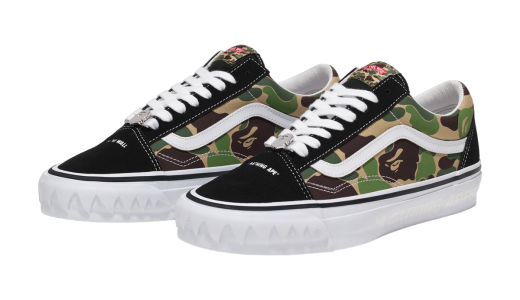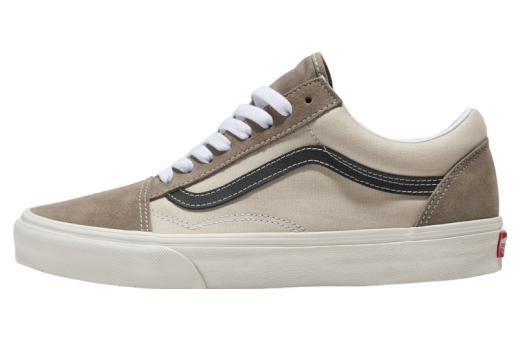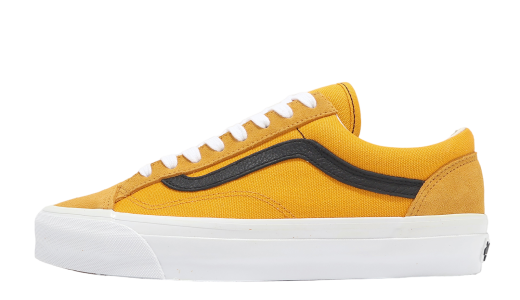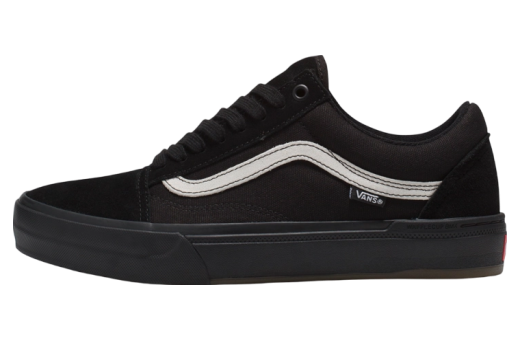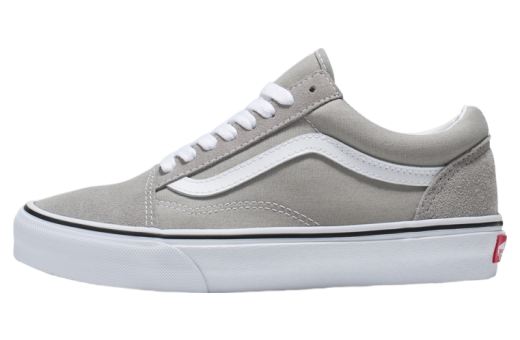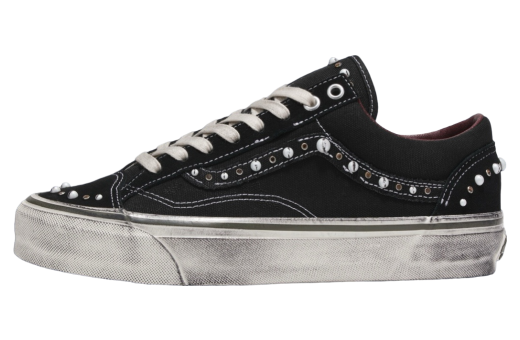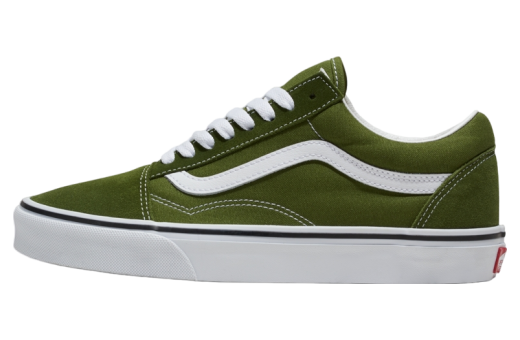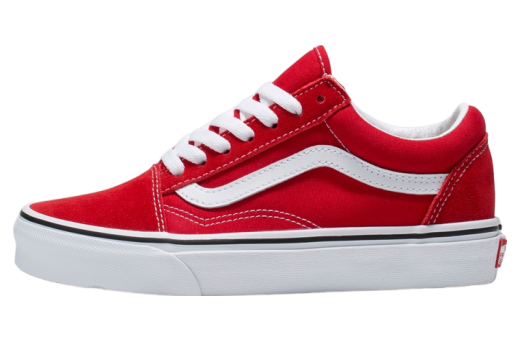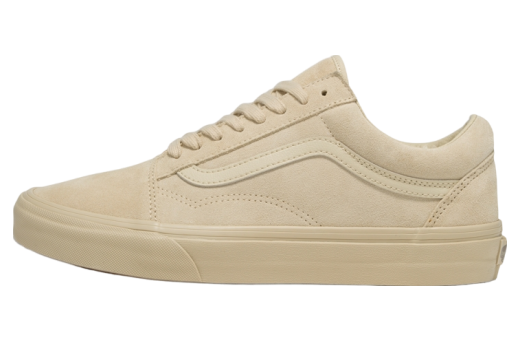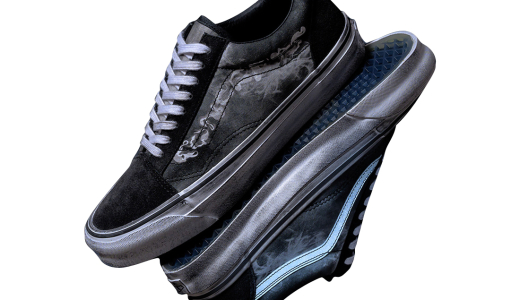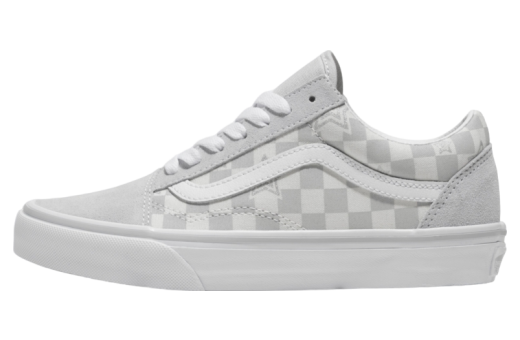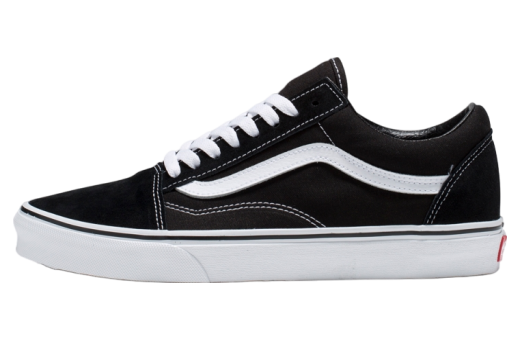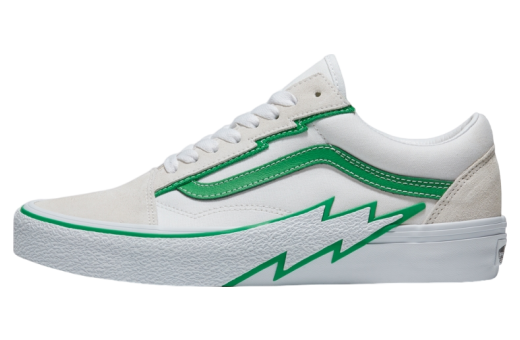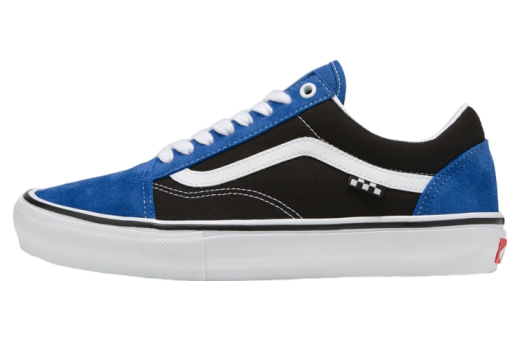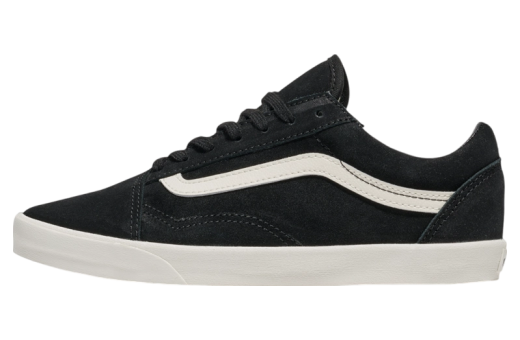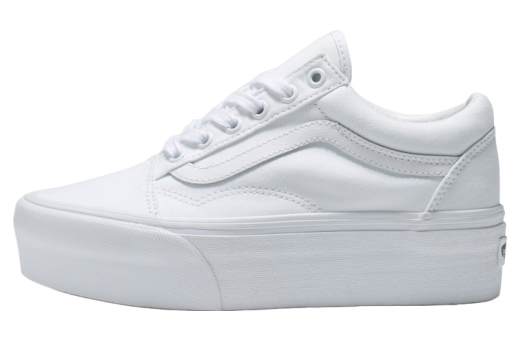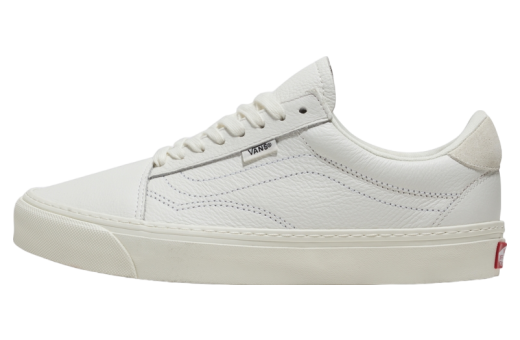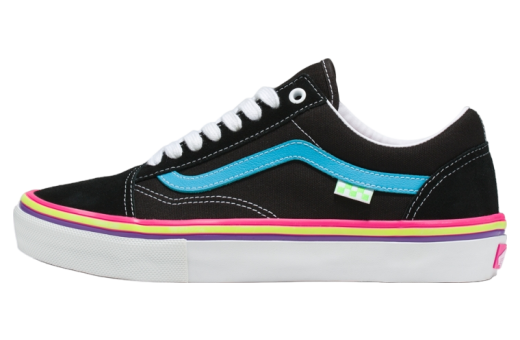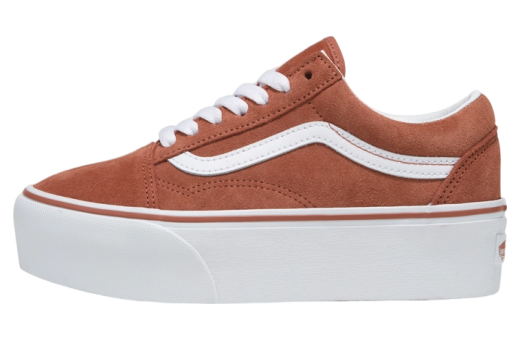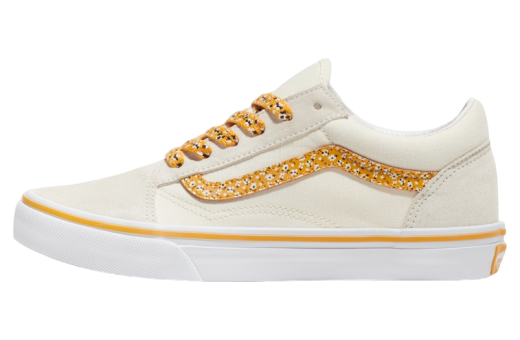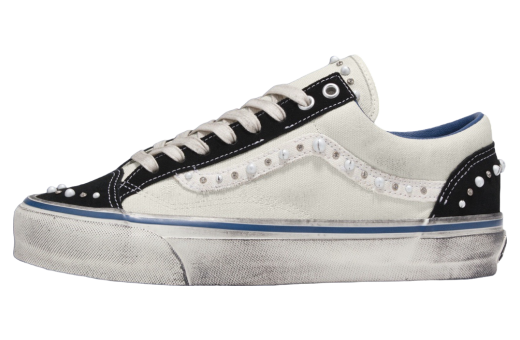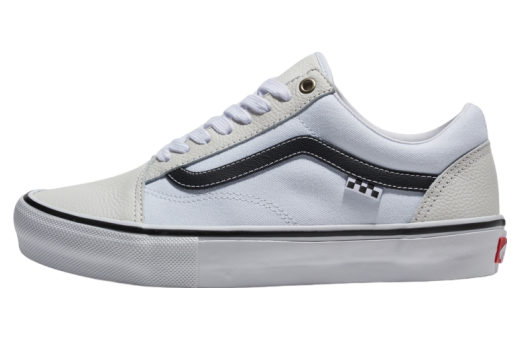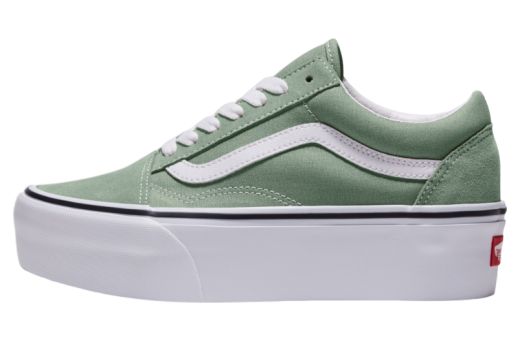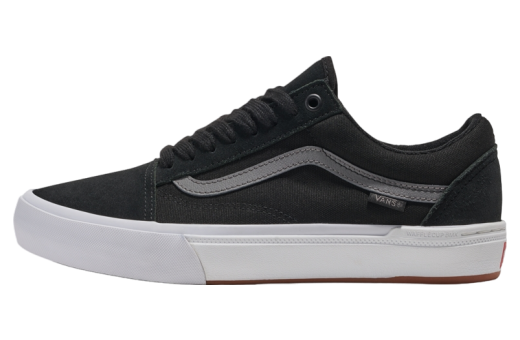Vans Old Skool
The Vans Old Skool is a classic piece of footwear that has managed to transcend generations since its initial release in 1977. Known for its distinctive side stripe, commonly referred to as the "jazz stripe," the Old Skool was the first Vans shoe to incorporate leather panels for increased durability. Besides its robust construction, the shoe also features the brand's signature waffle outsole, which offers remarkable grip and flexibility. Originally designed as a skateboarding shoe, the Old Skool quickly became a cultural icon, embraced not only by skaters but also by musicians, artists, and fashion enthusiasts who appreciated its blend of functionality and style.
Featuring a low-top silhouette, the Old Skool is versatile enough to complement various outfits and occasions, making it a staple in both casual and athleisure wardrobes. Available in an extensive range of colors, materials, and patterns, the shoe can be customized to reflect individual tastes. In addition to the traditional canvas and leather combinations, modern iterations often experiment with suede, denim, and even sustainable materials. Despite the evolving trends and numerous modifications over decades, the Vans Old Skool has retained its fundamental design and essence, proving that timeless style and craftsmanship never go out of fashion.
History of Vans Old Skool
The history of Vans Old Skool shoes is a tale deeply woven into the fabric of skateboarding culture and streetwear fashion. Introduced in 1977 as the Vans #36, the Old Skool was the first Vans shoe to feature the now-iconic side stripe, an emblematic design element contributing to the brand's enduring legacy. This journey explores the evolution of the Old Skool and its cultural significance through the decades, intertwining innovation, collaboration, and timeless style.
Beginnings: The Genesis of the Old Skool
Paul Van Doren and his brother Jim, along with Gordon Lee and Serge Delia, founded Vans in 1966 in Anaheim, California. Although the company initially produced deck shoes, which were well-received among Southern California's burgeoning surf and skate communities, it was clear that innovation was needed to keep pace with the rapidly evolving scene.
The Vans #36, now universally known as the Old Skool, was introduced in 1977. At its inception, the shoe stood out due to its combination of canvas and leather, enhancing durability. Skaters needed shoes that could withstand the demands of their highly physical sport, and the Old Skool quickly gained a reputation for robustness. Its side stripe was originally dubbed the "Jazz Stripe," created as a random doodle by Paul Van Doren. This squiggly line became an instantly recognizable hallmark of the Vans brand.
The Rise of Skate Culture
By the late 1970s and early 1980s, skateboarding had grown from a niche activity into a full-fledged subculture. As skateboarding iconography flourished, so did Vans. The Old Skool, with its reinforced toe caps and padded collars, offered skaters the support and protection they needed. Additionally, the shoe's waffle sole provided the necessary grip and board feel essential for executing tricks.
Skateboarding magazines, such as **Thrasher** and **TransWorld SKATEboarding**, began to feature images of prominent skaters like Tony Alva and Stacy Peralta wearing Vans shoes. This media exposure helped solidify Vans' status as the footwear brand of choice within skate culture.
The Fashion Statement
The Old Skool's rise was not limited to the skate world. It began transcending subcultural boundaries, appealing to musicians, artists, and fashion enthusiasts. The highly customizable nature of the shoe, with various colorways and materials (such as suede, synthetic leather, and canvas), made it an attractive option for personal expression. As punk rock and later grunge gained momentum, the Old Skool found its place in the wardrobes of icons like Henry Rollins and Kurt Cobain.
During the 1990s, the grunge movement's preference for rugged, functional clothing helped propel Vans even further into mainstream youth culture. The Old Skool's no-nonsense design harmonized perfectly with the ethos of the era. Its ability to blend effortlessly with various fashion undertones - punk, hip-hop, and grunge - made the shoe a staple of 90s style.
Technological Evolution and Craftsmanship
Despite its storied history, Vans has never been complacent, continually refining the Old Skool to meet contemporary needs. Technological advancements have been subtly incorporated to maintain the shoe's heritage while enhancing its comfort and performance. Enhanced cushioning, improved arch support, moisture-wicking linings, and durability updates have been made to keep the shoe relevant in an ever-changing market.
Moreover, traditional craftsmanship remains at the heart of the Old Skool. Vans prides itself on the skill and attention to detail embedded in each pair of shoes. This commitment to quality is one reason why the Old Skool has retained such an enduring appeal.
Collaboration and Innovation
The Old Skool underwent significant innovation through collaborations with other brands, designers, and artists. Over the years, Vans has teamed up with numerous influential figures in the fashion and arts industries, yielding unique versions of the Old Skool that combine classic design with contemporary flair.
In the early 2000s, collaborations with streetwear brands like Supreme and influential artists like Takashi Murakami and Tyler, The Creator brought fresh visual languages to the Old Skool, further embedding it into global streetwear culture. Each partnership offered a distinct reinterpretation of the classic silhouette, using bold colors, prints, and premium materials to breathe new life into the design.
The Old Skool has also ventured into the luxury fashion realm, with high-profile collaborations including brands like Fear of God and Marc Jacobs, who have integrated opulent materials and avant-garde design elements. These collaborations elevated the sneaker's status even further, allowing it to merge seamlessly with high-fashion domains.
Cultural Impact and Endurance
The Vans Old Skool has undoubtedly moved beyond its utilitarian origins to become a real cultural artifact. Its presence is minted in everything from significant fashion runways to music festivals, independent skate shops, art galleries, and even international pop culture. The Old Skool's ability to morph and adapt is a testament to its design's timelessness and the culture's ingenuity that continuously breathes new life into it.
Celebrities and influencers across generations, including Kristen Stewart, Justin Bieber, and rappers like ASAP Rocky and Lil Uzi Vert, have been spotted wearing Old Skools, further cementing its place in contemporary style. Social media platforms, especially Instagram and Pinterest, amplify its image to younger audiences who may not necessarily be connected to skateboarding but are drawn to its aesthetic and cultural relevance.
Sustainability and the Future
In recent years, Vans has also taken steps towards sustainability. Efforts to reduce waste and incorporate eco-friendly materials align with growing consumer demand for more ethically produced fashion. In 2020, Vans introduced the Eco Theory collection, which includes footwear made with organic cotton, natural rubber, and other sustainable components.
Vans’ continued commitment to sustainability is part of a larger industry trend, reflecting the necessity of evolving with and responding to the ever-changing global landscape. By innovating with sustainability in mind, Vans ensures that the Old Skool remains relevant to future generations who value environmental responsibility alongside aesthetic design and cultural significance.
Conclusion: A Legacy of Timeless Appeal
From its humble beginnings as a durable skate shoe to its position as a global fashion icon, the Vans Old Skool remains a testament to the power of thoughtful design and cultural resonance. Through decades of change, the Old Skool has retained its core identity while continually adapting to new styles, technologies, and societal values.
The Old Skool's enduring appeal lies in its versatility and robustness. It's a shoe that can be skated in, danced in, and walked in, transcending categories and crossing borders. It holds a unique place in history, symbolizing the intersection of sports, fashion, art, and culture.
As we look to the future, it’s clear that the Vans Old Skool will continue to evolve, embodying the spirit of creativity and resilience that has defined the brand since its inception. It’s more than just a shoe—it's a cultural icon, a fashion staple, and a testament to the enduring legacy of innovative design. Its journey from the skate parks of Southern California to the global stage illustrates a story of perpetual evolution, community, and timeless style.
